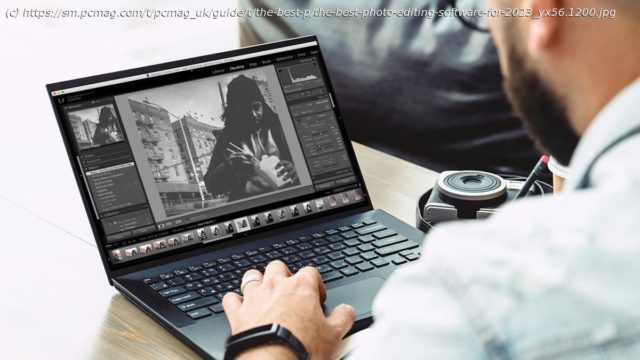Whether you’re a casual selfie shooter or a professional photographer, photo editing apps let you get the most out of your images. The software included here is best in our testing.
More than ever, you need software to organize, optimize, and edit your photos. Why? Because storage is ridiculously cheap, phone cameras are more powerful than the point-and-shoots of just a few years ago, and pro-level cameras have passed the 150-megapixel mark. To make the most of the resulting vast numbers of enormous image files, you need to be able to import them into your PC, organize them, pick the best of the crop, adjust them, and print or share them online. The best photo editing software handles all this with ease, letting you do as much or as little post-shoot production as you like. Whether you’re aiming for photorealism or Kardashian-like levels of retouching, these are the apps you need.
Here we present the best choices in photo editing software to suit every photographer. For more background on how to select the software that fits your need and what capabilities you can expect in these applications, read our buying guide below the review capsules.
Which Photo Software Should You Use?
Novice photographers taking vacation shots with a smartphone to share on Instagram want different software from those shooting with a $52,000 Phase One IQ4 in a studio. We include all levels of PC software here, and reading the linked reviews will make it clear which is for you. Nothing says that pros can’t occasionally use an entry-level application or that a prosumer won’t be running Photoshop, the most powerful image editor around. The issue is that, in general, users at each of these levels will be more comfortable with the products intended for them.
What Is the Best Photo Editing Software for Beginners?
If you’re just starting to dip your toes into photo editing, your options are getting better all the time. The obvious places to get started are with operating systems’ free, included applications, Apple Photos, Google Photos, and Microsoft Photos. These all include the basic light and color editing tools in simple interfaces.
Worth particular mention if you’re a more ambitious beginner is Adobe Lightroom, the non-Classic version. This includes the Discover community in which photographers and editors can share their entire process from raw image to final product. It even lets you submit your photos for the community to try their hands at. For in-program editing tutorials, Photoshop Elements, with its many Guided Edits that show you how to create arresting effects, is an excellent option.
The latest versions of Photoshop itself include plentiful help and learning content, though I recommend going through a basic online course for learning Photoshop. If you just want the basics and don’t have ambitions to do advanced editing, check out the free options in the next section.What Is the Best Free Photo Editing Software?
If you’ve outgrown the stock photo editing apps on your phone, like those preinstalled with the camera or the effects included in Instagram, does that mean you have to pay a ton for high-end software? Absolutely not.
Desktop operating systems typically include decent photo software at no extra cost. For example, the Microsoft Photos app included with Windows 10 (and updated for Windows 11) may surprise some users with its capabilities. In a touch-friendly interface, it offers a good level of image correction, auto-tagging, blemish removal, face recognition, and even raw camera file support. It can automatically create editable albums based on photos’ dates and locations.
Apple Photos does those things too, though its automatic albums aren’t as editable. Both programs also sync with online storage services: iCloud for Apple and OneDrive for Microsoft. With both, you can search based on detected object types, like « tree » or « cat » in the application. Apple Photos also can integrate with plug-ins like the excellent Perfectly Clear, and you can now access iCloud Photos in Windows 11’s Photos app.
Ubuntu Linux users are also covered when it comes to free included photo software. They get the capable-enough Shotwell app. And no discussion of free photo editing software would be complete without mentioning the venerable GNU Image Manipulation Program, better known as GIMP. It’s available for Windows, Mac, and Linux, and offers a ton of Photoshop-style plugins and editing capabilities, but very little in the way of creature comforts or usability. Other lightweight, low-cost options include Polarr and Pixlr.Can You Edit Photos Online?
In this list of the best photo-editing software, we’ve only included installable computer software. That said, entry-level photographers may be adequately served by online photo-editing options. These web apps are mostly free, and they’re often tied to online photo storage and sharing services. Flickr (with its integrated photo editor) and Google Photos are the biggest names here, and both can spiff up your uploaded pictures and do a lot to help you organize them.






